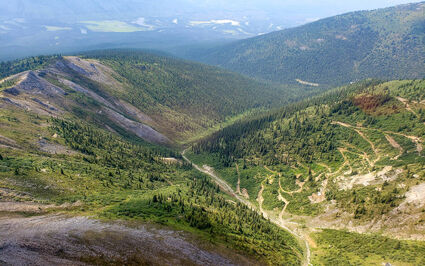ATAC investigates larger Tiger gold mine
North of 60 Mining News – November 15, 2019
Last updated 9/26/2020 at 11:15am

ATAC Resources Ltd.
Looking down on the Tiger gold deposit at ATAC Resources' Rau project in the Yukon.
ATAC Resources Ltd. Nov. 14 announced it is working on an updated resource estimate and preliminary economic assessment (PEA) for its high-grade Tiger gold deposit at Rau, the westernmost of three projects that make up the company's 185-kilometer- (115 miles) long Rackla Gold property in the Yukon.
A previous PEA, completed in 2016, in May, investigated the use of an agitated tank carbon-in-pul...
For access to this article please
sign in or
subscribe.







Reader Comments(0)